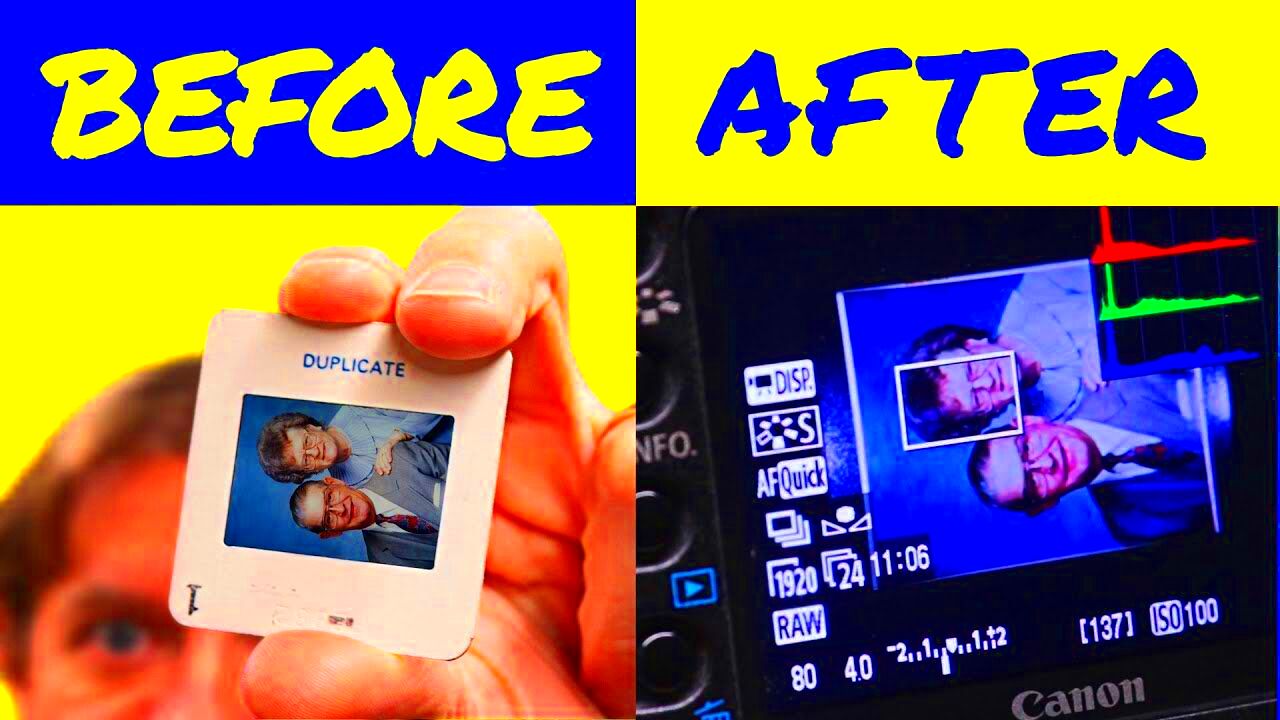In the current state of the art in communication, marketing and personal expression in digital terms, images are a necessity. Transforming your tangible slides into computerized photographs makes it possible to access numerous options. The uploading of your images not only guarantees their survival but also makes it easy to bounce and circulate them. Digital images can have a variety of uses, including:
- Creating online galleries
- Enhancing social media posts
- Making presentations more engaging
- Storing memories in a safer format
In addition, digital pictures are much more manageable and searchable meaning that the desired material can be located in a flash. Besides, over time technology keeps changing, hence the necessity of digitizing your photographs so that they can stay available forever.
Choosing the Right Tools for Conversion

When it comes to changing slides into digital pictures, choosing the best instruments is essential. The following are the possible alternatives:
- Slide Scanners: These devices are specifically designed to digitize slides quickly and efficiently. They often come with built-in software that enhances image quality.
- Flatbed Scanners: If you have a flatbed scanner, you can use it to scan slides. However, ensure it has a transparency adapter for optimal results.
- Smartphone Apps: Many apps allow you to take photos of slides directly with your phone, making it a convenient option.
Prior to choosing a device, consider aspects such as your finances, amount of slides you wish to alter and standard you desire. Investigate and check comments to uncover which remedy is appropriate for you.
Also Read This: How to Remove Background from Adobe Stock Images
Steps to Convert Slides into Digital Images
Are you all set to begin? Here’s a step-by-step direction on changing your slides into digital photos:
- Gather Your Slides: Collect all the slides you want to convert. Make sure they are clean and free from dust or fingerprints.
- Choose Your Tool: Select the scanner or app you'll use for the conversion process.
- Set Up Your Equipment: If using a scanner, connect it to your computer and install any necessary software. For apps, ensure your phone is charged.
- Scan the Slides: Follow the instructions for your chosen tool. If you're using a scanner, place the slide correctly in the holder and scan it. If using an app, position your phone over the slide and capture the image.
- Review and Edit: After scanning, check the images for clarity and color accuracy. Use photo editing software to make any adjustments if needed.
- Save Your Images: Choose a file format that works for you, like JPEG or PNG, and save your images in a designated folder on your computer.
- Back Up Your Files: Finally, make sure to back up your digital images on an external drive or cloud storage for safekeeping.
The following guidelines will allow you to effectively transform your slides into excellent quality electronic pictures.
Also Read This: Blurring an Image in PowerPoint
Tips for Enhancing Image Quality
Once you have turned your slides into digital images, the next step involves improving their quality. High quality images can greatly affect things if they are going to be shared online or used for several projects. Here are some useful suggestions on how to enhance them:
- Adjust Brightness and Contrast: Use photo editing software to tweak the brightness and contrast. This can help bring out details that might be hidden in shadows or highlights.
- Crop Unwanted Areas: Sometimes, slides can have unnecessary borders or distractions. Cropping can help focus on the main subject and improve composition.
- Reduce Noise: If your images look grainy, try using noise reduction tools in your editing software. This can smooth out imperfections and make your images cleaner.
- Sharpen the Image: Apply sharpening tools carefully to enhance edges without making the image look unnatural. Over-sharpening can lead to unwanted artifacts.
- Use Filters Sparingly: While filters can enhance images, use them with caution. Sometimes, a subtle adjustment is all you need to keep the image looking authentic.
To enhance the standard of your digital photos, rendering them more captivating and fit for any application, it is essential to abide by these guidelines!
Also Read This: Follow This Simple Way to Save Tiktok Video Without Watermark on iPhone
Common Issues and How to Resolve Them
It’s not uncommon to come across certain difficulties during the conversion, even when using these best tools. Some typical problems encountered in converting and their easy answers are highlighted below:
| Issue | Possible Cause | Solution |
|---|---|---|
| Faded Colors | Old slides may have lost color over time. | Use color correction tools in editing software. |
| Dust or Scratches | Dust on the slides or scanner can create marks. | Clean slides with a soft cloth and ensure the scanner is dust-free. |
| Blurry Images | Improper focus during scanning. | Re-scan the images, ensuring correct alignment and focus. |
| Inconsistent File Formats | Saving in multiple formats can create confusion. | Standardize your file types (e.g., use JPEG or PNG). |
It is important to be aware of common issues in order to prevent them before they happen and maintain good quality digital photographs.
Also Read This: how to remove images from pdf
Storing and Organizing Your Digital Images
After you have converted your slides to digital images, it is necessary to properly store and organize them. Below are some helpful tips on how to keep everything tidy and within reach:
- Create a Folder Structure: Set up a logical folder system on your computer. You might create folders based on year, event, or subject to make finding images easier.
- Use Descriptive File Names: Rename your images with clear, descriptive names. For example, instead of "IMG_001," use "Family_Reunion_2023." This makes searching for specific images a breeze.
- Backup Your Files: Regularly back up your images to an external hard drive or cloud storage. This protects your memories from unexpected data loss.
- Consider Image Management Software: Tools like Adobe Lightroom or Google Photos can help organize, edit, and share your images more efficiently.
In this way, you will be able to keep your images in a good order and get hold of them easily after many years.
Also Read This: how to remove saved images on pinterest
Sharing Digital Images Online
After you have transformed your slides into digital pictures, it is possible that you may desire to share them with friends, family or the world! Online sharing of images can be an excellent way of displaying the past times or advertising oneself. Here are several commonly used sites plus hints on how to share digital images:
- Social Media: Platforms like Instagram, Facebook, and Twitter are perfect for sharing images. Make sure to use hashtags to reach a wider audience and engage with others.
- Cloud Storage: Services like Google Drive and Dropbox allow you to share files easily. You can send links to specific images or entire folders to your contacts.
- Photo Sharing Websites: Websites like Flickr or SmugMug offer dedicated spaces for photographers to share their work. These platforms also provide options to sell prints if you're interested.
- Your Own Website or Blog: If you have a website or blog, consider creating a gallery page to showcase your images. This can help you build an online presence and share your passion for photography.
Please, always protect your privacy when sharing images. Always consider who can see your pictures and if it is necessary to put a watermark on them. In that regard, sharing digital photos with the hope that they will be an enjoyable and rewarding experience can be done with these tips!
Also Read This: Top Best Linkedin Background Photos Free Download
FAQs about Converting Slides into Digital Images
As a newcomer in the world of transforming slides into digital images, there are many questions running through your mind. This article seeks to address some of these common queries:
| Question | Answer |
|---|---|
| What file format should I use? | JPEG and PNG are the most common formats. JPEG is great for photos, while PNG is better for images that require transparency. |
| How do I ensure the best image quality? | Use a high-quality scanner and follow editing tips to enhance brightness, contrast, and sharpness. |
| Can I convert slides without a scanner? | Yes! You can use smartphone apps to capture images of your slides, but ensure good lighting and focus for the best results. |
| What should I do with old slides I don't want? | Consider donating them to local archives or organizations that preserve historical media, or recycle them responsibly. |
Slide-to-image transformation journey can be made easier with the aid of these most frequently asked questions.
Conclusion on Converting Slides to Digital Formats
Transforming slides into digital images is a fulfilling undertaking that provides room for new options regarding the safeguarding and sharing process of different memories. As we have already discussed, digital photos are extremely important for both personal pleasure and business purposes. However, you can make sure that your precious memories are well-preserved and conveniently available by using the right tools, following some tips to improve the quality of them and having a plan for sharing or organizing them.
When using digital files, you can not only secure your slides among other things that include creativity in the way they are displayed or shared. Therefore collect those power point slides of yours, determine what apparatus to use and start this awesome ride that will see you turn those memories into bytes. Good luck with all conversions!

 admin
admin








